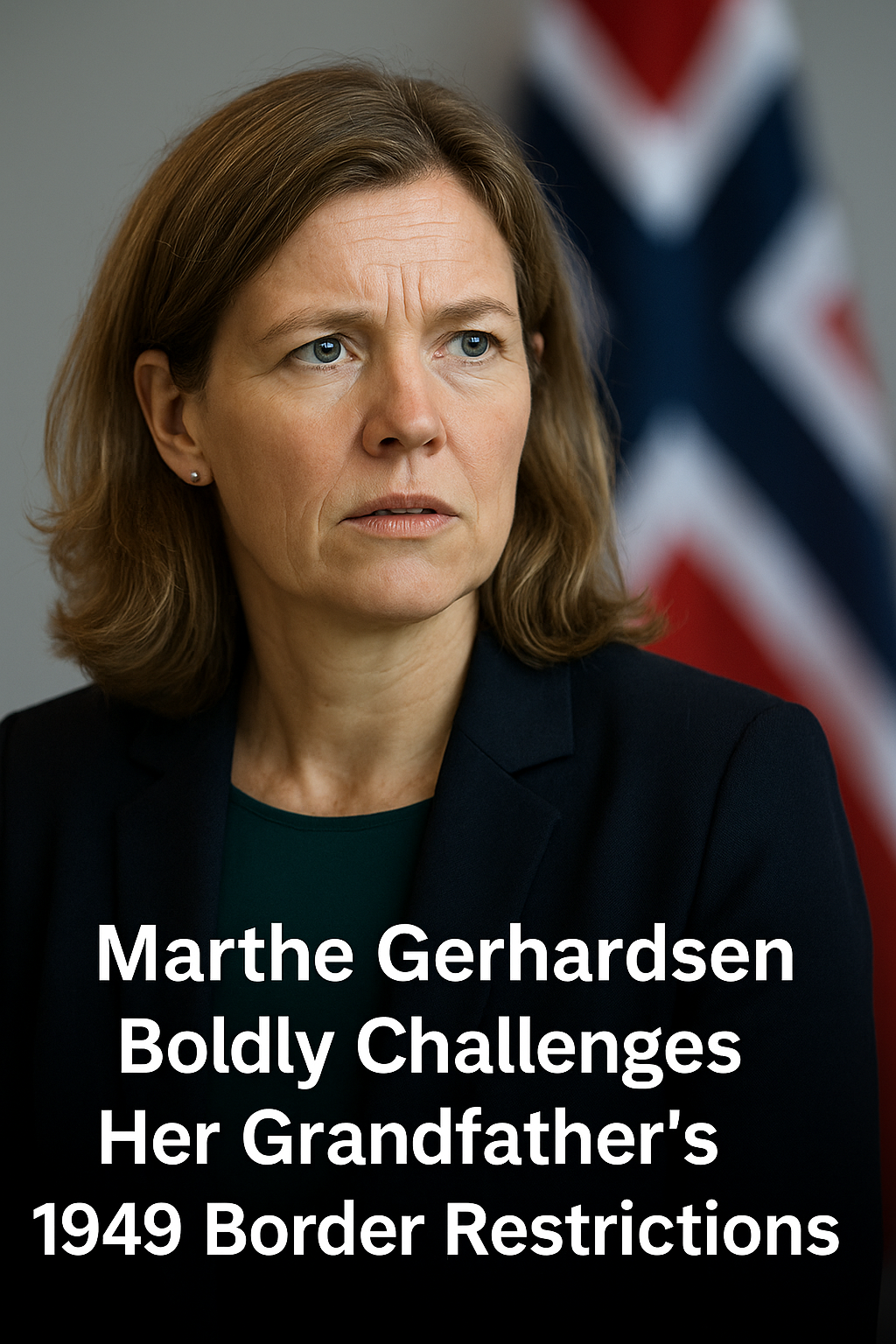Norway has long followed a unique military policy in its far northern region of Finnmark, close to the Russian border. This policy includes restrictions that the country chose to impose on itself, aiming to avoid provoking Russia.
A Policy Born in the Cold War
Marte Gerhardsen, the Defense State Secretary, is now at the forefront of discussions to reassess these self-imposed restrictions, as the security landscape in the region evolves.
These self-imposed rules date back to 1949 when Norway became one of the founding members of NATO. Prime Minister Einar Gerhardsen, the grandfather of current State Secretary Marthe Gerhardsen, made a deliberate choice at that time. He didn’t want Norway to seem aggressive to the Soviet Union.
So, even though Norway joined the military alliance, it promised not to allow foreign troops near the Russian border. It also banned nuclear weapons and American military bases in peacetime.
This approach was meant to show Moscow that Norway wanted peace, not conflict. It worked as a balance—joining NATO while trying to keep things calm with its powerful neighbor to the east. But now, more than 70 years later, this policy is being questioned.
Norway’s Risky K9 Howitzer Gamble Shakes Arctic Tensions
Calls for Change in a New Security Environment
Europe is in a completely different place now than it was in 1949. The whole security landscape was altered in 2022 by Russia’s full-scale invasion of Ukraine. In response, Finland and Sweden joined NATO. This has made Norway’s old restrictions appear outdated to many people in government and the military.
Marthe Gerhardsen, who is now the State Secretary in the Defense Ministry, has started working on changing these military rules. “We are in another security policy situation,” she says. We are working on that since it makes sense to take another look at it.
Under the current rules, NATO forces are not allowed to train on the ground east of Porsanger in Finnmark. Also, NATO surveillance aircraft were not allowed to fly east of the 27° longitude. But after the Ukraine war, Norway slowly began allowing British and American aircraft to fly further east on missions in the Barents Sea.
Still, ground training for NATO soldiers in eastern Finnmark remains restricted. In Norway, this has generated a great deal of discussion. These limitations, according to critics, are no longer helpful. They claim that since Finland permits NATO forces to exercise significantly closer to the Russian border, it is illogical to cease NATO training in Norway.
Massive Pressure on Norway’s $1.8 Trillion Sovereign Fund Over Ukraine Aid
Local Voices and National Debate
Magnus Mæland, the Mayor of Sør-Varanger, the Norwegian municipality that borders Russia, is one of the loudest voices calling for change. “All of Norway must be open to training after all of Norway has been defended,” he states. He thinks Norway ought to follow Finland’s lead and let NATO training close to its border.
Maeland and Marthe Gerhardsen went to a World War II memorial on May 8 in the northeastern Norwegian town of Kirkenes. They were commemorating the restoration of peace in the region for eight decades. Kirkenes was freed by Soviet forces in October 1944, but after five years of Nazi rule, Norway as a whole was not free until May 8, 1945. The timing and location of the visit made the current debate even more symbolic.
Gerhardsen spoke about the need for change but avoided giving too many details. “We are collaborating closely with our new allies, particularly in the areas of exercise and training,” she stated. “Their inclusion in NATO is beneficial for both Norway and the alliance as a whole.”
Many believe the differences between Finland and Norway are now too significant to ignore. Unlike Norway, Finland does not have self-imposed restrictions on NATO drills near the Russian border. U.S. forces can train at locations like Rovajärvi in Lapland and be based at the Border Guard facility in Ivalo, both near Russia.
Norway Joins UK Carrier Strike Group for Indo-Pacific Deployment
Marte Gerhardsen admitted that this situation pressures Norway’s old approach. “We have to work differently because of the new challenges from Finland and Sweden joining NATO,” she said.
Military leaders and security experts also support lifting the restrictions, arguing that training in eastern Finnmark is crucial for readiness. They believe these limitations hinder Norway’s ability to prepare for potential threats.
Prime Minister Jonas Gahr Støre previously stated there were no plans to change Norway’s defense policy, highlighting its long-term predictability. However, with growing pressure from local leaders and experts, the restrictions are now a key topic in Norway’s defense discussions. Marte Gerhardsen is leading the push to reassess these outdated policies, aiming to adapt Norway’s defense strategy to current needs and NATO requirements.

